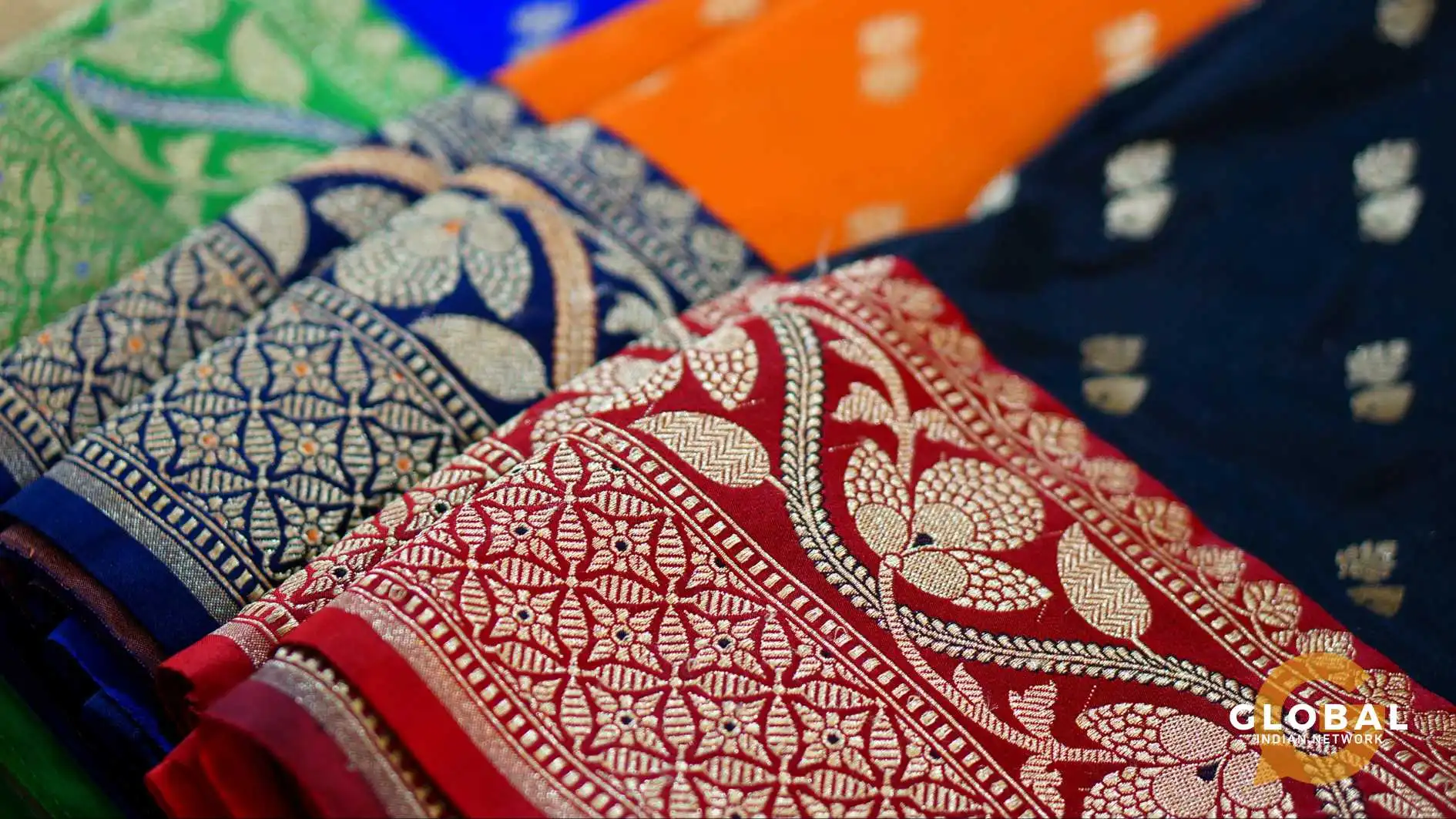Indo-Western fusion fashion is often described as a meeting point between different worlds, yet the meeting is not theatrical. It is closer to a merging of instincts. A silk saree might lean toward the structure of a gown, or a kurta might adopt the crisp line of a shirt. The transformation rarely feels abrupt. Instead, this kind of dressing grows from a gentle desire to hold tradition in one hand and contemporary life in the other. What results is a kind of visual language that is both familiar and exploratory.
The most interesting part of this hybrid style is the way it refuses to draw clear borders. A blazer layered over a handwoven drape does not cancel the drape. The drape does not overpower the blazer. Together, they create an atmosphere of easy belonging. The wearer looks like they move through multiple cultural zones at the same time, and perhaps this is the truest reflection of how many people live now. Identities are no longer singular.
Table of Contents
Why Indo-Western Fusion Fashion Matters to People
For many who move through global spaces, clothing becomes a small form of negotiation. A person may feel deeply connected to their heritage yet also feel at home in modern metropolitan routines. Clothing becomes a bridge between these moods. A jumpsuit softened with chikankari carries memory but still suits the pace of a workday. A kurta worn with sneakers signals a willingness to let old and new versions of the self coexist.
The power of fusion lies partly in its practicality. It also offers emotional clarity. It says that culture can be carried lightly. It does not need to be performed in a rigid manner. It can breathe. It can shift shape depending on the moment.
Craft and Technique Beneath the Hybrid Surface
The ease that fusion seems to project is the result of meticulous thought. Designers refine patterns so that a drape falls naturally, even when paired with a structured bodice. Heavy fabrics are replaced with softer blends that move with the body. Pockets, lighter linings, adjustable closures, and modular attachments change how traditional garments function.
When a designer chooses a handwoven textile from a small community instead of an industrial print, the garment becomes part of a larger ecosystem. Livelihoods that rely on slow craft receive support. At the same time, Indo-Western fusion fashion can also hide these contributions. Motifs may be borrowed without proper credit, or artisans may not be acknowledged beyond a vague reference to heritage. This tension sits at the centre of many conversations about fusion fashion. It can uplift or erase depending on the choices made.

The Shifting Politics of Representation
Fashion once moved in a predictable direction, with Western silhouettes shaping global standards. That pattern is losing authority. South Asian designers, stylists, and creators now influence international runways. Their presence changes how the world imagines elegance. A sari-inspired gown or an embroidered jacket is no longer viewed as an exotic element. It is simply another discovered global style.
Yet visibility does not guarantee fairness. When motifs travel into large markets, the communities that created them may not receive proportional recognition or profit. A weaving technique refined over generations can become a mass-produced pattern with no mention of its origins. This raises a set of questions that remain unresolved. Who benefits from this Indo-Western fashion’s global popularity? Is fusion a celebration or a form of extraction? The answers depend on the ethics behind each garment.
Comfort, Fluidity and Personal Expression
One of the most refreshing qualities of hybrid fashion is its openness to play. Women have embraced structured bandhgalas. Men have chosen flowing kurtas with denim. Young people no longer feel bound to predetermined categories for outfits. They experiment with layering, draping, and combining pieces in ways that feel intuitive.
This flexibility opens a path toward inclusivity. Elastic waist lehengas, palazzos that move easily, and tunics that can be adjusted depending on comfort allow wearers to participate in cultural aesthetics without feeling observed or judged. Clothing becomes a tool for self-expression rather than self-restriction. Heritage bends toward the body. The body no longer struggles to fit inside heritage.
A Global Life Shaped by Digital Circulation
The evolution of Indo-Western fusion fashion is intertwined with digital culture. A look worn in Delhi can inspire a designer in Berlin within a single afternoon. A wedding outfit shared by someone in Singapore can influence a collection in Mumbai. Ideas circulate through screens, and the boundaries between regional networks loosen.
This kind of rapid circulation has two sides. On one hand, it democratizes taste. On the other hand, it accelerates consumption. A silhouette perfected by artisans can be copied by factories in a short time. The original labour fades while the imitation spreads. If fusion is meant to honour multiple traditions, then it must also protect the time, care, and history that shape these traditions.
Sustainability and the Slow Pleasure of Reinvention
Increasingly, people use Indo-Western fusion fashion as a way to keep cherished textiles alive. An old Banarasi sari might become a tailored coat. A dupatta may find a new life as a skirt. Borders from a worn garment may be applied to a contemporary dress. These gestures keep memory close. They also prevent waste and help create garments that feel personalised rather than disposable.
Sustainability in this context is not only about recycling. It is also a philosophy of slowing down. It asks wearers to appreciate the journey of a textile. It reminds designers to value craftsmanship. It helps establish a future in which fashion remains creative but also conscious of the stories woven into each thread.
How Fusion Fashion Helps Global Indians Stay Rooted Across Borders
For the Global Indian community, Indo-Western fusion fashion is more than an aesthetic preference; it is a quiet form of cultural continuity. Living across continents often means living between codes, expectations, and identities. Fusion fashion helps bridge these worlds without forcing a choice between them. It allows Indians abroad to honour their roots while blending seamlessly into international environments, whether that’s a boardroom in London, a creative studio in Toronto, or a university campus in Sydney.
At the same time, this hybrid style becomes a way to narrate identity with confidence rather than apology. For second-generation Indians, it becomes a tool to reclaim heritage in ways that feel modern and self-directed. For first-generation immigrants, it softens the tension between nostalgia and practicality. And for diaspora communities building cultural visibility globally, Indo-Western fashion creates a shared, recognisable aesthetic that travels across weddings, festivals, everyday life, and digital culture.
Ultimately, fusion fashion becomes a cultural anchor, something portable, adaptable, and expressive. It affirms belonging in multiplicity and reminds the Global Indian community that identity does not need to be edited to fit into new places. It can expand, evolve, and still stay rooted.
Conclusion
In the end, Indo-Western fusion fashion is less about mixing styles and more about honoring complexity. It accepts that identity is layered. It recognizes that people belong to many places at once. It allows tradition to survive by letting it transform. It holds modernity without discarding the past.
The future of fusion will depend on how thoughtfully it is practiced. Will designers continue to collaborate with artisans? Will consumers learn to ask about origins? Will the global market adopt diversity without flattening it?
These questions are worth sitting with. They encourage a gentler way of thinking about fashion. And perhaps this is what makes Indo-Western fusion fashion meaningful.

FAQs
What defines Indo-Western fusion fashion?
Indo-Western fusion fashion is defined by the blend of Indian textiles, drapes, embroidery and traditional silhouettes with Western cuts, tailoring and everyday practicality.
How does Indo-Western differ from purely ethnic or Western fashion?
Unlike strictly traditional wear or entirely Western outfits, fusion pieces sit in the space between. A saree with a structured blouse, a blazer over a lehenga or a kurta styled with denim are examples where neither side dominates. Instead, the garment creates a shared language, reflecting multiple identities at once.
Is Fusion a Reliance brand?
Yes. Fusion is a private label fashion brand by Reliance Retail, offering contemporary womenswear that often includes modern silhouettes, relaxed everyday styles and semi-ethnic influences.
What is the 3-3-3 rule in fashion?
The 3-3-3 rule in fashion encourages simplicity. A person chooses three tops, three bottoms and three pairs of shoes to mix and match for a set period of time. The idea is to reduce decision overload, cut down impulse buying and help the wearer discover personal style through fewer but more versatile pieces.









